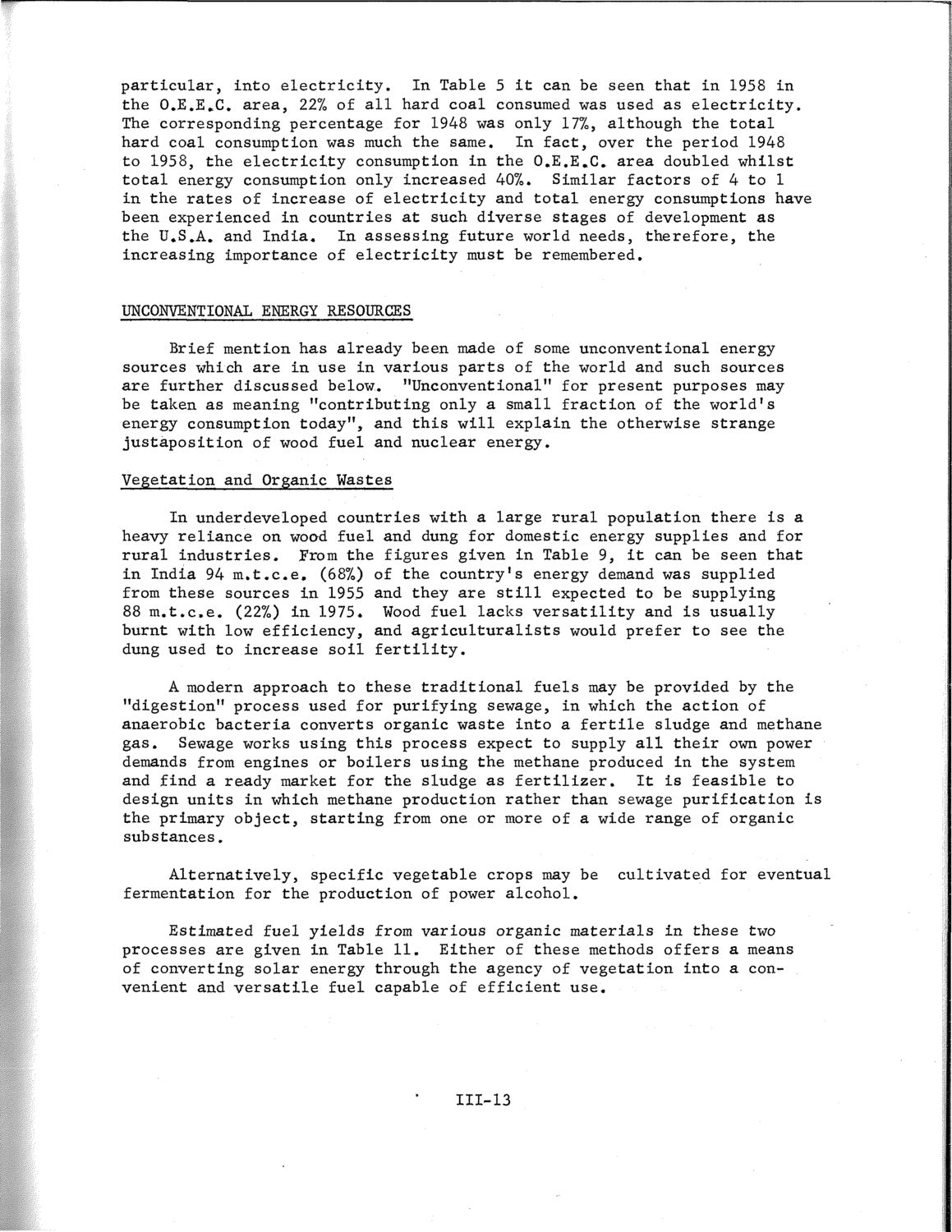| |
| |
Caption: SWE - Proceedings of the First International Conference of Women Engineers and Scientists
This is a reduced-resolution page image for fast online browsing.

EXTRACTED TEXT FROM PAGE:
particular, into electricity. In Table 5 it can be seen that in 1958 in the O.E.E.C. area, 22% of all hard coal consumed was used as electricity. The corresponding percentage for 1948 was only 17%, although the total hard coal consumption was much the same. In fact, over the period 1948 to 1958, the electricity consumption in the O.E.E.C. area doubled whilst total energy consumption only increased 40%,. Similar factors of 4 to 1 in the rates of increase of electricity and total energy consumptions have been experienced in countries at such diverse stages of development as the U.S.A. and India. In assessing future world needs, therefore, the increasing importance of electricity must be remembered. UNCONVENTIONAL ENERGY RESOURCES Brief mention has already been made of some unconventional energy sources which are in use In various parts of the world and such sources are further discussed below. "Unconventional" for present purposes may be taken as meaning "contributing only a small fraction of the world's energy consumption today", and this will explain the otherwise strange justaposition of wood fuel and nuclear energy. Vegetation and Organic Wastes In underdeveloped countries with a large rural population there is a heavy reliance on wood fuel and dung for domestic energy supplies and for rural industries. From the figures given in Table 9, It can be seen that in India 94 m.t.c.e, (6870) of the country's energy demand was supplied from these sources in 1955 and they are still expected to be supplying 88 m.t.c.e. (22%) in 1975. Wood fuel lacks versatility and is usually burnt with low efficiency, and agriculturalists would prefer to see the dung used to increase soil fertility. A modern approach to these traditional fuels may be provided by the "digestion" process used for purifying sewage, in which the action of anaerobic bacteria converts organic waste into a fertile sludge and methane gas. Sewage works using this process expect to supply all their own power demands from engines or boilers using the methane produced in the system and find a ready market for the sludge as fertilizer. It is feasible to design units in which methane production rather than sewage purification is the primary object, starting from one or more of a wide range of organic substances. Alternatively, specific vegetable crops may be fermentation for the production of power alcohol. cultivated for eventual Estimated fuel yields from various organic materials in these two processes are given in Table 11. Either of these methods offers a means of converting solar energy through the agency of vegetation into a convenient and versatile fuel capable of efficient use. Ill-13
| |